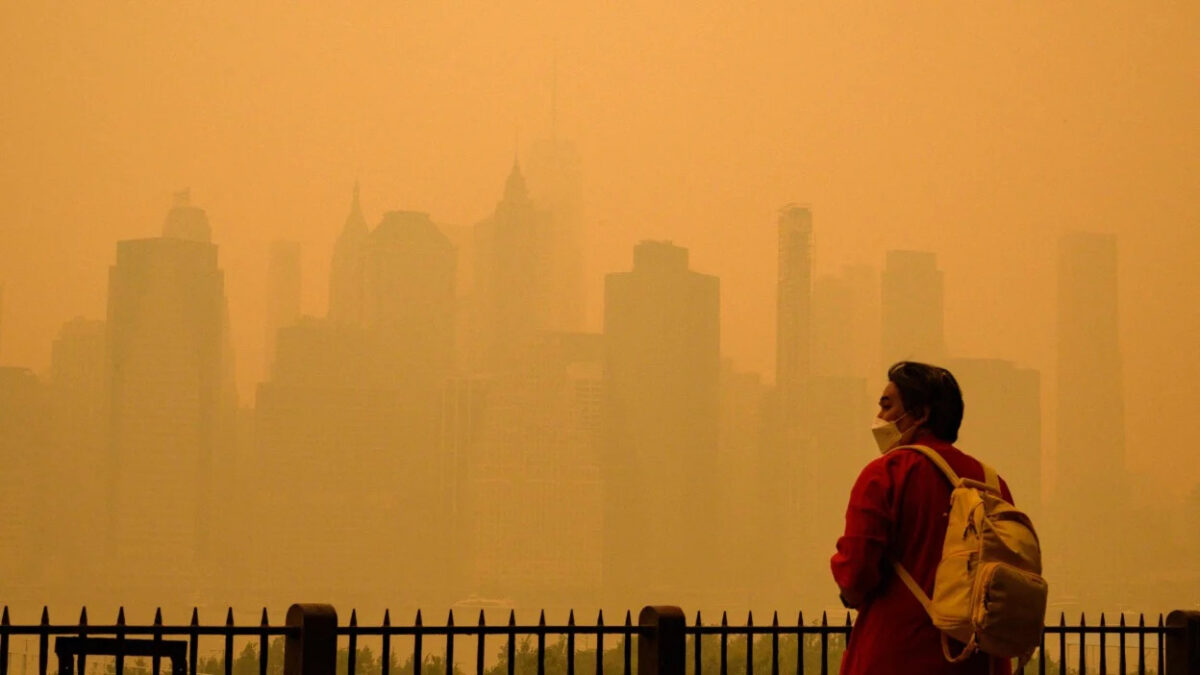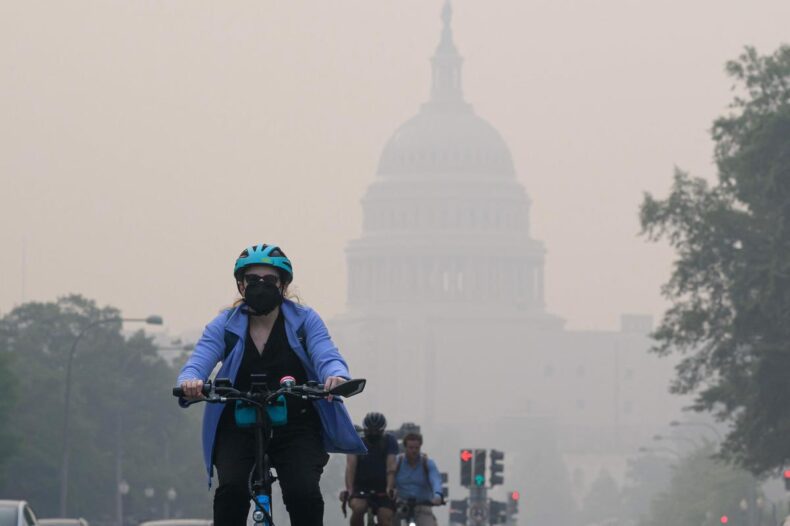Canada is experiencing its most severe beginning to the wildfire season ever, with fires engulfing regions spanning from the western provinces to Atlantic Canada.
As wildfires continue to devastate various parts of Canada, many Canadians are once again wearing face coverings that became widely used during the COVID-19 pandemic. This time, the masks are being used as a precautionary measure to safeguard against the harmful smoky conditions, just when people were starting to feel safe enough to remove them.
Canada is experiencing its most severe beginning to wildfire season, with fires raging across provinces from the west to Atlantic Canada. The smoke generated by the wildfires in Quebec has descended upon southern Ontario and made its way into the United States, causing flight disruptions and prompting people to stay indoors.
Certain mask companies that previously sold protective gear during the pandemic have shifted their marketing focus towards wildfire-related products. United Canada, a mask supplier, recently sent an email containing “Wildfire Season Safety Tips” alongside an N95 mask. Similarly, Canada Strong also sent an email titled “Ontario Smoke will be Intense – Helpful Tips” on Tuesday.
When asked if these companies have observed an increase in mask interest, they did not respond on Thursday.
Impacts of Wildfire
Rivi Hume-Beardall personally experienced the impact of the wildfire season. Upon stepping outside, she noticed discomfort and difficulty breathing, prompting her to wear a mask. Hume-Beardall expressed her desire that the presence of hazy air serves as a gentle reminder to individuals regarding the importance of the environment.
Samantha Green, a family doctor at Unity Health in Toronto, expressed concern about the smoky air due to the presence of particulate matter measuring 2.5 microns or less in diameter. These tiny particles can penetrate not just the lungs but also the bloodstream.
Research conducted on individuals has established a connection between wildfire smoke and elevated occurrences of heart attacks, strokes, and cardiac arrests, as well as an increase in emergency room visits for respiratory ailments, and compromised immune defenses. Moreover, wildfires have been associated with eye irritation and skin issues.

Green emphasized the importance of wearing masks for individuals spending time outdoors when the air quality health index exceeds 7. She highlighted the need for protective measures, particularly for those who are frequently exposed to air pollutants due to outdoor work or homelessness. Green further emphasized the urgency of improving our preparedness at a systemic level, acknowledging the worsening state of affairs.
Support across the globe
Countries across the globe have committed to enhancing their support to Canada as it battles against numerous wildfires that have ravaged the nation, marking the most severe beginning to a wildfire season in its history.
Over the past month, forest fires that have grown stronger have compelled tens of thousands of individuals to evacuate their residences and created a smoky haze that covers a wide area of the United States.
The burned area currently stands at approximately 4.3 million hectares (10.6 million acres), which is about 15 times greater than the average annual figure of the past ten years. The warm and dry conditions are expected to persist in the coming months.
The fires have had an impact on mining operations in Canada and have disrupted flights within the United States. On Thursday, the Toronto District School Board, the largest school board in Canada, rescheduled or relocated all outdoor activities, including field trips and local school events, to indoor venues.
While wildfires are not uncommon in Canada, it is unusual for fires to be burning simultaneously in both the eastern and western regions, straining firefighting resources. This has led the government to deploy military assistance and has raised concerns about the escalating effects of climate change.













